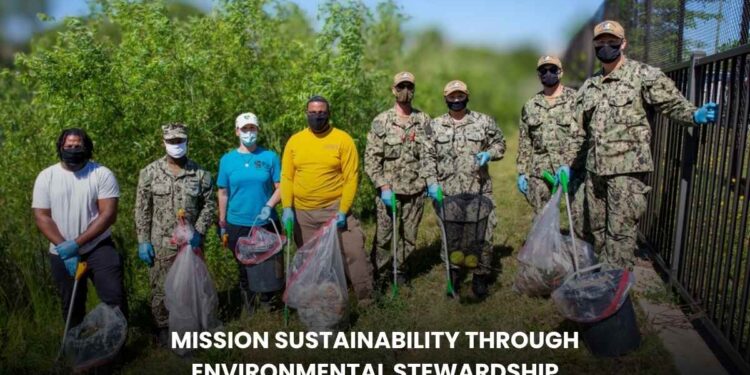The US DoD focuses on protecting the natural environment around military installations and achieving military readiness. Environmental Stewardship represents the responsible use of nature and managing the impacts. Let’s see how military sustainability is achieved through environmental stewardship.
Military environmental stewardship is about armed forces acting responsibly toward nature during all operations. The Defense Department has initiated numerous programs and taken the lead in achieving improvements to enhance military mission operations.
The US DoD has held a large amount of land that is home to many species and has been away from urban development. The DoD used the land for establishing military bases, training areas, and other operations, and now environmental protection is added before installing any military operations.
What’s the scope of military Environmental Stewardship?
Environmental stewardship is not morally right, but it is a necessity to deal with or adapt to climate change and achieve sustainable missions. Let’s understand the scope of the military environmental stewardship:
- Pollution reduction:
- The military operations can cause pollution from hazardous materials used in missions that could affect the natural habitat, the installations, or the natural resources.
- Environmental stewardship implements measures that would reduce pollution or assess the materials before using them for military operations to evaluate their effect and reduce the impact on nature.
- Environment and Land Management:
- Environmental stewardship involves land and environment management to ensure that military installations and training areas do not affect the environment, and it is free from environmental restrictions.
- The land would be managed in a way that would conserve the biodiversity, restore the affected habitats, and protect the endangered species.
- Resource management:
- Environmental Stewardship involves the responsible use of natural resources, such as raw materials, water, and others, and promoting sustainable practices, such as waste management, etc.
- Commitment to nature:
- Around 30 million acres of land are under the DoD, so the environmental goals and policies also affect the administered land and space.
- The defense department needs to comply with the legal frameworks and regulations related to environmental protection.
How does the US DoD support mission sustainability through Environmental Stewardship?
The US DoD supports mission sustainability through environmental stewardship by conservation of natural and cultural resources, climate adaptation, regulations compliance, and others. The DoD has started many programs and initiatives to achieve these goals, such as:
- Navy Marine Species Research and Monitoring Program:
- The Navy has started the program to ensure that the training and testing are conducted at sea in compliance with the Marine Mammal Protection Act (MMPA) and Endangered Species Act (ESA).
- The program invests in research to monitor the marine species and coordinates the operations in a way that would not affect the sea and the species.
- Net Zero Strategy:
- The Army has started the Net Zero Strategy, where the Army installations will produce electricity and water as much as they use and reduce the solid waste disposal.
- Each installation will be designed with technologies that could manage the waste, be less reliant on the outer grid, and the water supply.
- Navy’s Steward Sea Program:
- The Stewards of the Sea is an environmental stewardship initiative that spreads awareness and educates the general public and other people about the Navy’s actions and policies.
- The Navy shows how it protects the marine ecosystem while it conducts training and operations.
- REPI:
- The REPI program, initiated by the DoD, focuses on military readiness and environmental protection.
- REPI invests in multiple projects that focus on military readiness while also protecting the environment and promoting sustainable practices.
What are the strategies for mission sustainability?
Let’s understand the strategies for mission sustainability while protecting the environment, too:
- Sustainable Management System:
- The DoD promotes that each defense installation should have a sustainable management system that focuses on protecting the environment and restoring the natural resources.
- The system will partner with local state agencies, environmental agencies, and other federal agencies to follow the sustainable approaches.
- Renewable Energy:
- The DoD is transitioning to renewable sources at military installations and training areas, which lowers greenhouse gas emissions.
- Environmental monitoring:
- The DoD is investing in technologies that can assist them in monitoring the environmental impact of military operations and reducing the impacts and potential damage.
- Waste management:
- The DoD has taken a strategic approach to managing the waste from the military installations, as they are near the natural habitats, and has reduced the effect on nature.
- The military bases are also following recycling and effective waste management practices.
- Climate Resilience:
- With the climate change impacts, we must include climate resilience in defense installations and operations to adapt to climate change.
What are the challenges in implementing environmental stewardship?
The government and associated authorities are doing their bit to achieve mission sustainability through environmental stewardship; however, there are some challenges too, such as:
- Mission and operations success: With environmental restrictions, military operations or missions can be affected, which can challenge the authorities while focusing on the environment.
- Funding: The environmental practices will need funding for technological advancement, working on various strategies, or others; hence, funding gaps can be a challenge for the authorities.
- Communities: The local community can challenge the authorities with their initiatives or military installations. Though the authority is taking steps to improve the relationship with local communities and involving them in the proposals.
The defense authority has taken responsibility for environmental protection while looking out for military mission readiness for national security, as well as protecting the environment for future generations.










